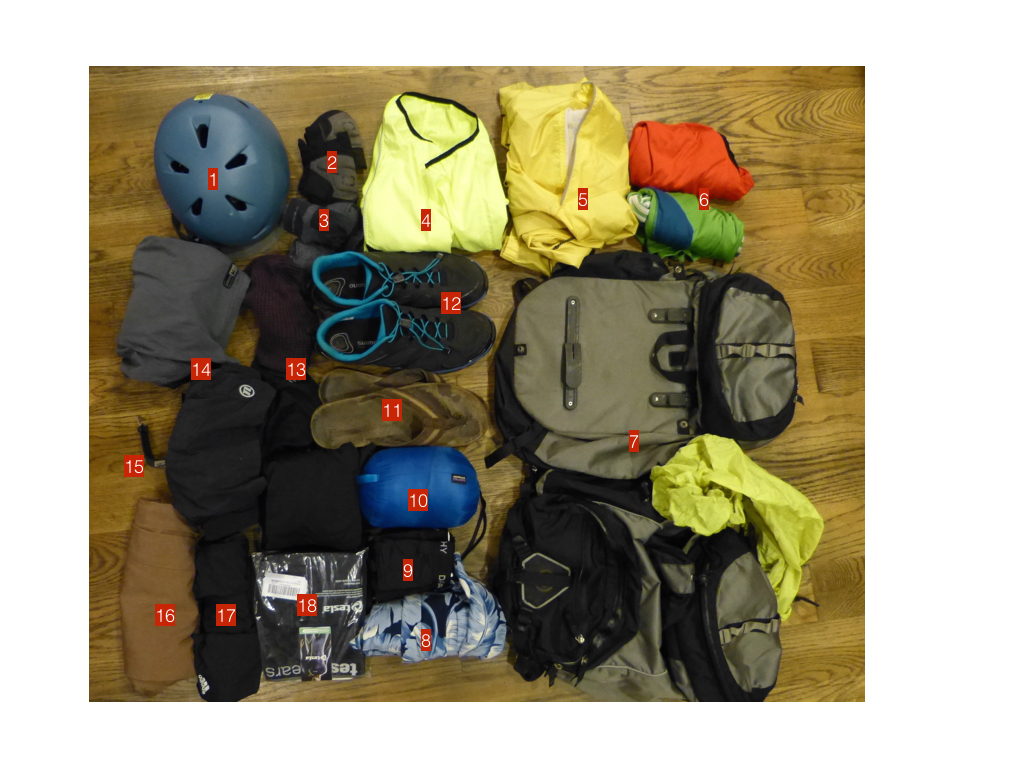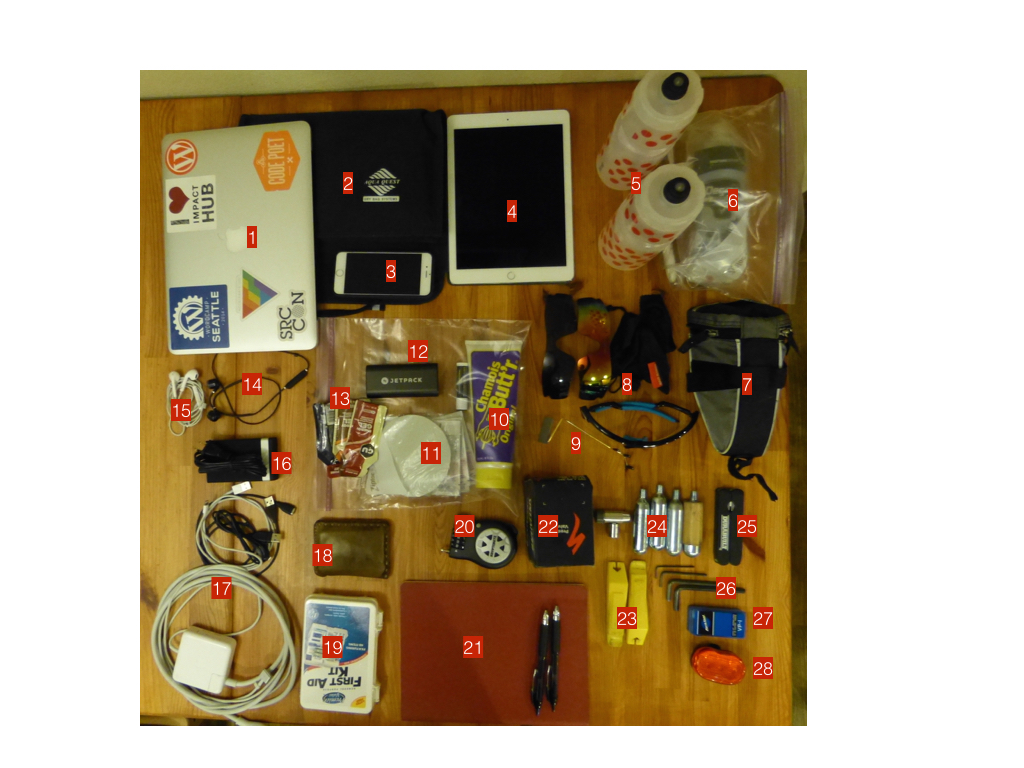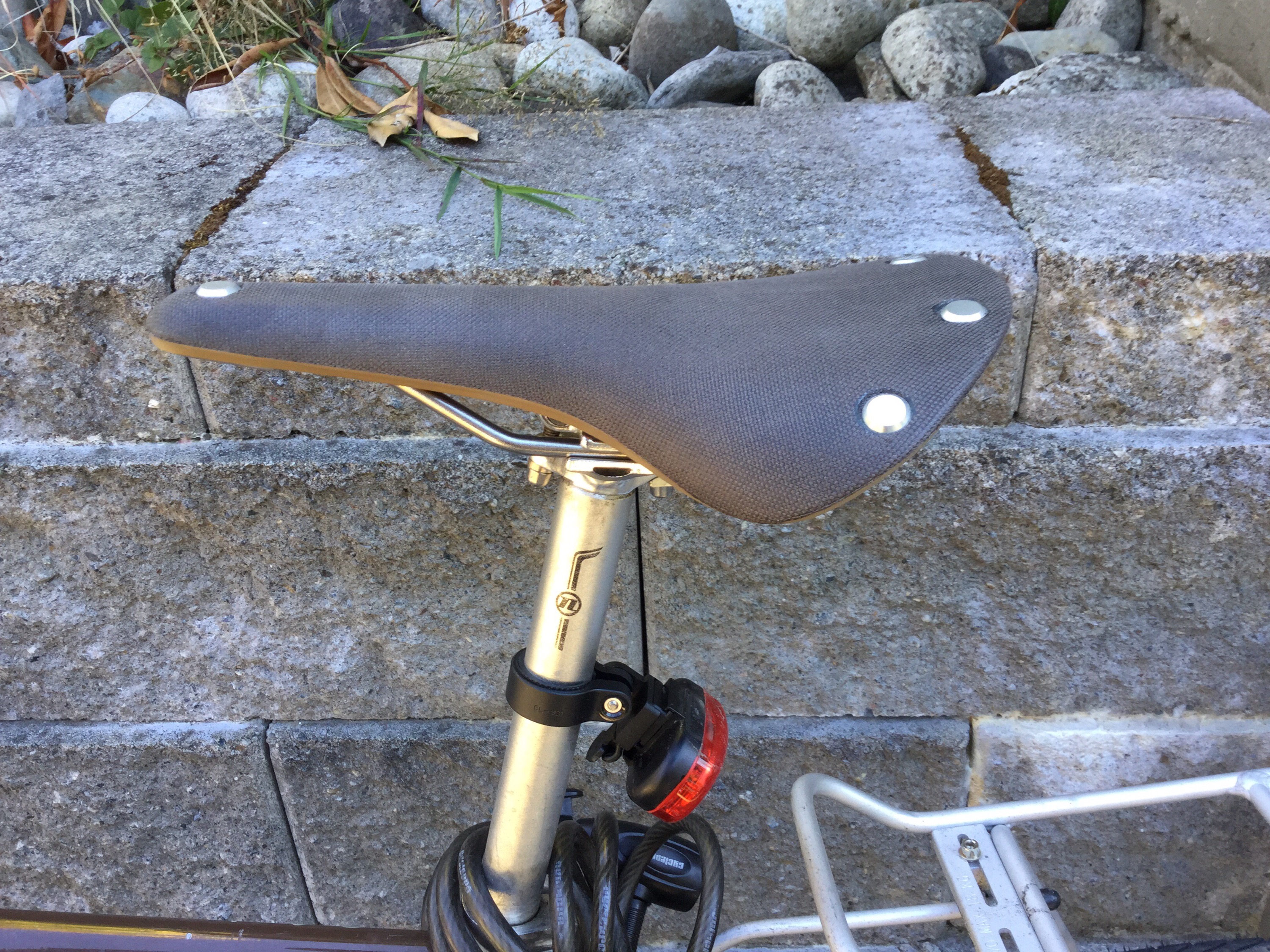It’s two weeks before my departure to Utah, and my body feels like it will likely be in sufficiently good condition to handle the rigors of the 13 or so days of pedaling over four mountain ranges I’m about tackle But there are other things to get ready before I depart, the most important of which are probably the bike itself (of which more in a later post) and then all of the stuff I need to take with me either on my body, on my bike or in my saddle bags. So in the tradition of a certain CEO, I thought I’d provide a look at what exactly I’ll be dragging around with me on this voyage. In what follows I’ve tried to account for all of the objects I’ll be transporting — everything except my body and the bicycle. The lone exception — I think — is the bicycle pump I use, which happens to be mounted to the frame. So without further ado, here’s what’s coming with me.
Mostly on my body or bike:
- Bern Brentwood Zip Mold helmet with visor (XXL — apparently my head is massive.)
- bike gloves
- Novara quick-dry bike socks
- Louis Garneau Nova riding vest
- Novara cycling rain jacket
- jerseys
- Novara panniers with rain fly
- swimming trunks (I’m going to some hot springs, and I jump in rivers)
- lightweight underwear
- Patagonia lightweight down hoody jacket (cold mornings, > 5000 ft passes)
- flipflops
- Shimano CT71 click’r bike shoes
- bike hat, warm hat
- 2 pairs bike shorts
- FitBit surge
- “town” pants for days off (Bluffworks)
- Gym shorts (to sleep in)
- Tesla under-layer compression shirts and pants
Mostly not on my body:
- 13” MacBook Pro (I’m going to work for 4 of the days I’m on the road.)
- Aquaquest dry bag for MBP and iPad — in case my bag falls in a river
- iPhone 6
- iPad Air 2
- Purist water bottles
- Toiletries
- under-seat tool case
- Rivbos removable-lens cycling glasses, bag, extra lenses
- take-a-look rear-view mirror (attaches to glasses — extremely important safety item)
- Chamois butt’r (don’t ask)
- laundry kit (for doing laundry in the sink)
- Jetpack charger
- Gu emergency nutrition (prevents bonking)
- Havit bluetooth earbuds
- Apple earbuds (for when the Havit ones are charging)
- Zilu 5-usb charger
- power cords and chargers etc
- wallet
- first-aid kit
- kryptonite light-weight lock
- journal, pens
- spare tubes
- tire irons
- Portland Design Works shiny object CO2 inflator and cartridges
- multi-tool
- allen keys
- patch kit
- rear light (not going to be riding at night, but just in case)
Actually pulling out all of this gear and listing it makes me aware of how much I’m planning to take … this is probably a good thing, since I think that over-packing is a much bigger threat than under-packing for these sorts of trips. Though I’ll be in some remote places, I have to remember that the high plains of Oregon and Idaho are a far cry from the ends of the earth. Rather, my packing philosophy is based around avoiding manageable bike-disasters (which really equates to dealing with flats quickly), staying warm and being able to work and stay in contact from the road. One thing I don’t have to worry about is camping — and that’s because I won’t be doing any. Deciding to “credit-card” it (ie: sleep in motels of various kinds) subtracts a lot of weight from the bicycle — no tent, sleeping bag and the like.


